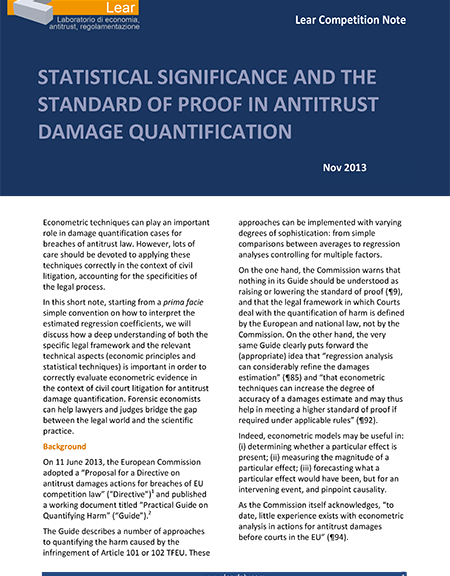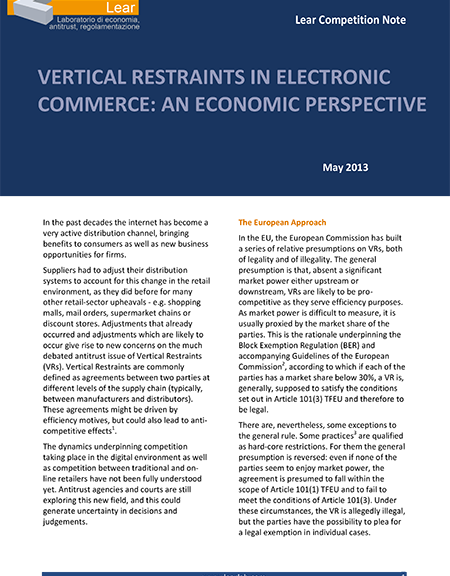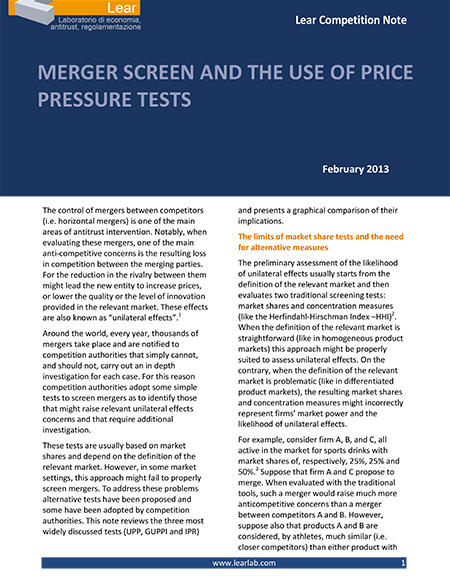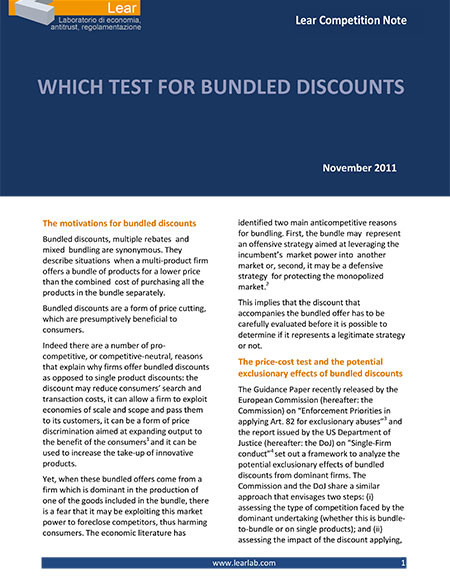Econometric techniques can play an important role in damage quantification cases regarding breaches of antitrust law. In this short note, starting from a prima facie simple convention on how to interpret the estimated regression coefficients, we will discuss how a deep understanding of both the specific legal framework and the relevant technical aspects is important in order to evaluate econometric evidence correctly in the context of civil court litigation for antitrust damage quantification.
Archives
Vertical Restraints in Electronic Commerce: an economic perspective
Vertical Restraints (VRs) are commonly defined as agreements between two parties at different levels of the supply chain. These agreements might be driven by efficiency reasons but could also lead to anti-competitive effects. In the past decade, the development of electronic commerce has raised new issues concerning the dynamics underpinning competition in the digital environment as well as competition between traditional and on-line retailers. Through the analysis of the Pierre Fabre Dermo-Cosmétique case, this note seeks to outline a different approach in the assessment of VRs in electronic markets and analyses some critical issues that are often neglected.
Merger screen and the use of price pressure test
Mergers between competitors might generate relevant anti-competitive effects. Therefore, competition authorities need effective tests to make a preliminary assessment of the likelihood of unilateral effects of horizontal mergers. These tests are usually based on market shares and rely on the definition of the relevant market. However, in some market settings, this approach might fail to screen mergers adequately. To overcome the limitation of traditional tools some alternative tests have been proposed. This note reviews the Upward Pricing Pressure (UPP), the Gross Upward Pricing Pressure Index (GUPPI) and the Illustrative Price Rise (IPR) and presents a graphical comparison of their implications.
Price Relationship Agreements: economic analysis and implications for competition
Price Relationship Agreements (PRAs) are agreements linking one supplier’s price to those charged to other customers or by competitors. Firms adopt PRAs for many different reasons and the competitive effects of these agreements may vary substantially. This note summarizes the main findings of a comprehensive literature review of PRAs, bringing together different economic theories of harm and efficiency motivations, and provides some policy implications.
Which test for bundled discounts
Bundled discounts are a form of price cutting which are presumptively beneficial to consumers. However, bundle offers from a dominant firm might exploit market power to foreclose competitors, thus harming consumers. The European Commission and the DoJ set out a framework to analyze the potential exclusionary effects of bundled discounts by dominant firms. Focusing on the implementation of the price-cost test, this note discusses two issues that neither the DoJ nor the Commission have addressed so far. Namely, the evaluation of the nature of competition in the relevant markets and the rule to allocate the discount across the products when bundle-to-bundle competition is not possible.





